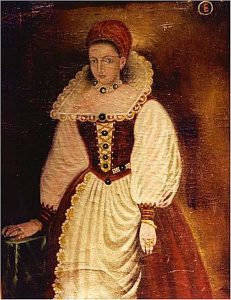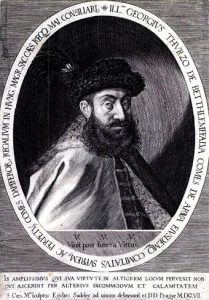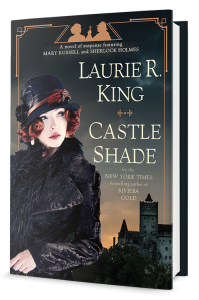Blood Countess? Or Strong Ruler?
(Two weeks to Castle Shade! And here’s background of one of the people mentioned.)
Elizabeth (Erzébet) Báthory was the daughter of a prominent noble Hungarian family, born in 1560. As a child she suffered from seizures, possibly epilepsy. She was educated, as only the highest levels of women would be, including several languages including Latin and Greek. She was engaged at the age of 10, a common means of establishing political ties. At 15, she married (her husband was 19) and received as her wedding gift a castle, a country house, and seventeen surrounding villages.
When she was 18, her husband was made commander of Hungary’s war against the Ottomans, and while he was away, she not only ran their vast estates, she oversaw the defense of these key areas. And she did so not by cajoling and depending on the skills of the men around her, but by shoving them aside and curtly getting on with the job. Not a nice woman, by the way, but a strong one.
Her husband died of an illness in 1604, when she was 44. Before he died, he entrusted his family to one of the richest nobles in Hungary, Gyorgy Thurzo—who did not succeed in setting the Countess aside.
And, the king owed a great deal of money to the Count Báthory—and thus to his widow.
Around that time, convenient rumors began to circulate, that the Countess was mistreating girls given into her care. No, she was abusing them. Oh no—she was doing worse than that, by beating and torturing them, starving and murdering them—in fact, she kept her beauty by bathing her face in their blood, and she stripped off their flesh to eat it.
Interestingly, the man the king sent to investigate the rumors was… Gyorgy Thurzo.
He elicited testimony by torturing her servants—always a good way to get unbiased and complete information.
He compiled reams of statements from hundreds of accusers—none of which was actual evidence, merely second-hand rumors.
And when she was found guilty and her vast properties taken for redistribution—she was neither executed nor imprisoned, merely sentenced to live out her days in her own castle.
Was Erzébet Báthory a twisted pervert, the worse female serial killer ever, who horribly tortured hundreds of young innocents for her own pleasure? Or was she a stubborn, impatient, tough-minded woman with what would have been seen as a shameful disability, who married young and almost immediately assumed enormous responsibilities, and who was clearly quite ready to do without any man’s help.
A threat, who was removed by the use of rumor?
In Castle Shade, confronted by rumors against another woman ruler, Mary Russell isn’t so sure the woman was a horror…
Castle Shade, out June 8, 2021, details and excerpt here. Order a copy signed, from Bookshop Santa Cruz and Poisoned Pen, or from your local Indie bookshop, or Barnes & Noble or Amazon.



I’ve wondered about this since I first read about Erzebet Bathory. She was in a position of power, in a place and time when this was very rare for a woman. Thurso would have coveted her position and her riches, seeing her as ‘unnatural’, in her strength of personality, and her ability to run her estates and keep order among the nobles. How much easier to throw these allegations at her, than to take power militarily?
Witness statements obtained by torture aren’t necessary accurate, and epilepsy, at the time, was seen as a mark of evil. Who knows the truth?